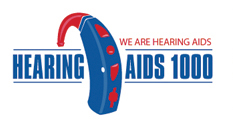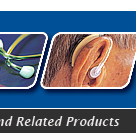|
History Of Hearing Aids
Reviews & Information
What’s that?
Speak up–on the history of the hearing aid, which is
like almost every other feature of the human creation, our
natural ability to hear what’s going on in the world around us, is not
the best. Few men have eyes that see as keenly as a hawk, few can smell
as well as the blood-hound or other creatures, and no one can run as
fast as a horse (that’s why we have cars)! Where the human sense of
hearing is concerned, it has been the same forever—and for almost as
long, inventive people, physicians and others, have devised ways to
assist those who might not hear as well as others, often the elderly.
Every species of animal has a different ‘threshold of
hearing’, and it depends on more than just cocking your head and
cupping your ear. Various frequencies of sound cause a different
response, and your inner-ear and mental apparatus will ‘tune’ to the
frequencies you hear the most, such as human speech. So, impairment
in your hearing means that your ear, nerves, and the auditory-portion
of your brain, do not perceive sounds in the ordinary range for other
people. And as we know, this circumstance in life does not indicate any
lack of intelligence, education or attention span. Indeed, many of
history’s most respected scholars and wise-men have suffered from poor
hearing.
The ‘hearing aid’ specifically, however, appeared in history
like many other modern conveniences, through long periods of
trial-and-error. Records from as early as 1588 described by the writer
Giovanni Battista Porta, show that healers of that time fashioned
‘hearing aids’ of wood, shaped like the ears of animals known for acute
hearing—as if some of that natural, animal ability would rub off on
the hard-of-hearing from that early period. Ear-trumpets, such as
elongated tubes with a funnel-shaped end, were commented on by Francis
Bacon in 1627. Medical and surgical approaches were also tested through
1878, when doctors learned to repair the perforated tympanic ‘ear-drum’
membrane. Then in 1898, about the time electricity came into use, the
first commercial hearing aid, called a ‘carbon-type’, was produced in
the U.S. by the Dictograph Company.
Inventor Thomas Alva Edison, credited with thousands of
inventions and among the first to realize the potential of electricity,
was himself ‘hard-of-hearing’ from childhood, and became technically
deaf in his teens. Edison’s patent for the ‘carbon-transmitter’, which
translated sound into electrical signals, was the basis of the
Dictograph Company device. Additionally, Alexander Graham Bell,
credited with inventing the telephone, was concerned with deafness and
opened a school for teachers of the deaf in 1872. While working to
invent a hearing aid, he instead invented the telephone, so widely used
today. In 1899, the Akouphone Company patented the first practical
electric hearing aid, again using the carbon-transmitter, and a
microphone with a battery. It retailed for $400 and was large enough to
require it’s own table for the user.
By 1952, the first transistor hearing aids were developed.
These hybrids featured both vacuum tubes and a transistor, considered
advanced before the digital-computerized age. These types were
developed and refined over many years, until very sophisticated and
successful models became available, which were also small and
attractive. By the 1960’s, the miracle of the transistor allowed
hearing aid designers to create ‘over-the-ear’ or ‘behind-the-ear’
models that were considered a great improvement. These were later
followed by features like directional microphones, and integrated
circuitry that helped users to distinguish between speech and
background noises. Tiny batteries for ‘in-the-canal’ aids with analog
sound-systems that were almost completely hidden from view were also
developed. Then in the 1980’s, with the introduction of lithium
batteries, hearing aids went digital like the rest of the world, and
these ‘hearing helpers’ became almost like mini-computers.
By 1984 in America, the Food and Drug Administration approved
the first so-called cochlear implant for pubic use, advancing the
technology for improved hearing for the impaired even more. This
procedure, however, were controversial among the deaf community. But
other advances went forward for the more-traditional aids, like
dual-processing, multi-tone banding to recognize speech components like
vowels and consonants, and advanced feedback controls.
So, from the days when a wooden-funnel shaped like the ear
of a fox or hound substituted for better hearing, to an era when the
elderly might have held a silver or brass ‘trumpet’ to his ear in the
dinner parlor when guests wanted to chat, and through to the time when
electricity was used, and then developed into quality hearing-aids that
really worked very well for millions of people—the quest to assist
the human-creature with his poor hearing, may well have been the envy
of all sorts of animals and species with much better ears than ours.
All sorts of devices have been used—including tubes and domes of fine
metals that amplified the sounds of stage-performances or announcements
in the throne-rooms of kings, as well as things like the so-called
‘bone-conductor’, developed in 1933, which transmitted sound directly
through the bones of the skull. And the wonderful world of hearing has
never been the same.
For more information about audiologists:
Top History Of Hearing Aids Offers: Updated |
Learn More: Acoustic Neuroma and Hearing Aids




